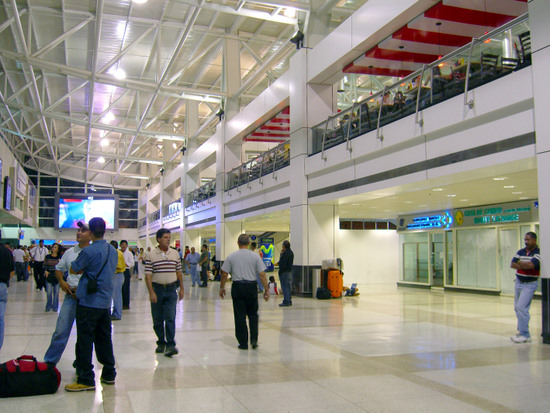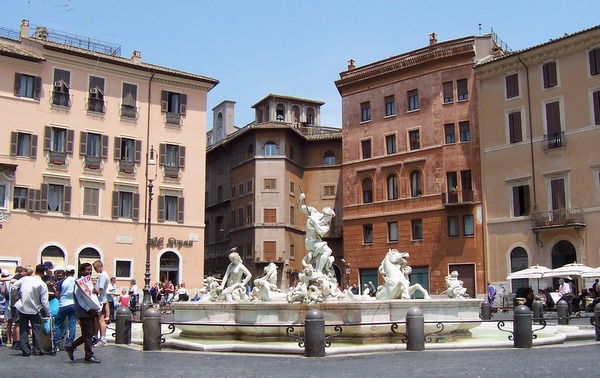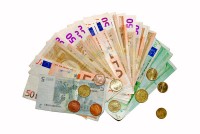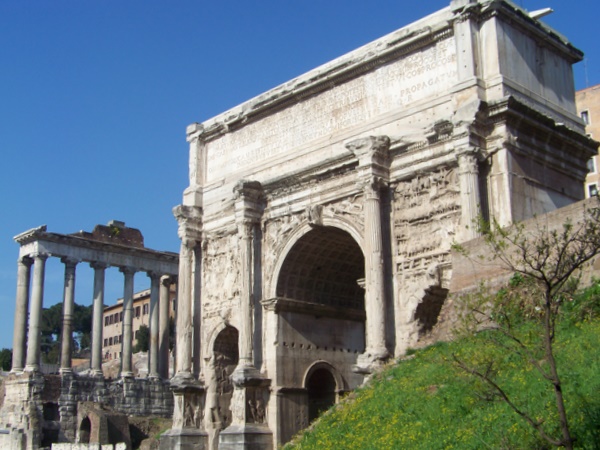Most first-time visitors are filled with excitement and suspense when they first arrive in Rome. This guide will help you get to your hotel and plan the rest of your stay. Rome is so full of unfathomable beauty that it’s worth knowing what you’re getting into. Some facets of Rome can come as a shock, too. For example, it is common for motorists to ignore red lights, crosswalks, and stop signs. This guide will tell you what you need to know about Rome.
How To Get To Your Hotel in Rome
 Rome’s airport, officially named Leonardo da Vinci but typically called Fiumicino, is 16 miles from the city center. It is directly connected to Rome’s primary train station, Roma Termini. Trains run regularly from early morning to 11:30pm and tickets cost 11 euro. For more in-depth information, read How To Get from Fiumicino Airport to Rome . Taxis, buses, chauffeured shuttles, and rental cars are alternative methods (I would not recommend driving in Rome). Also, ask your hotel if it offers a courtesy van that can pick you up.
Rome’s airport, officially named Leonardo da Vinci but typically called Fiumicino, is 16 miles from the city center. It is directly connected to Rome’s primary train station, Roma Termini. Trains run regularly from early morning to 11:30pm and tickets cost 11 euro. For more in-depth information, read How To Get from Fiumicino Airport to Rome . Taxis, buses, chauffeured shuttles, and rental cars are alternative methods (I would not recommend driving in Rome). Also, ask your hotel if it offers a courtesy van that can pick you up.
Roma Termini is a modern train station with electronic ticketing machines, English-language help desks (including a very helpful tourist office near track 24), and all manner of shops. If you’re ever in a bind and need to use wireless internet, the McDonald’s upstairs offers it for no additional cost. Taxis and buses can be found in the area directly in front of the station. You can get a bus route map at the tourist office.
-Insider Tip: The Roma Pass can save you money on public transportation as well as major tourist attractions, including the Coliseum and Galleria Borghese. For more information, check out Skipping The Tourist Lines In Rome .
Safety in Rome
 Rome is not especially dangerous. It is certainly no more dangerous than Manhattan, San Francisco, or Miami. That said, because it is a major tourist destination it attracts pickpockets. Roma Termini train station has a bad reputation for pickpockets and vagrants, but if you are careful you won’t run into any trouble. When in the train station, keep wallets, purses, laptops, and cameras very close. Do not stand in one place carelessly: People in Rome are usually in a hurry, and pickpockets will immediately recognize you as a tourist.
Rome is not especially dangerous. It is certainly no more dangerous than Manhattan, San Francisco, or Miami. That said, because it is a major tourist destination it attracts pickpockets. Roma Termini train station has a bad reputation for pickpockets and vagrants, but if you are careful you won’t run into any trouble. When in the train station, keep wallets, purses, laptops, and cameras very close. Do not stand in one place carelessly: People in Rome are usually in a hurry, and pickpockets will immediately recognize you as a tourist.
Buses, particularly those that operate between tourist sights, are another place to be especially alert. Rome’s Metro system is safe during all hours of operation. Most of Rome’s neighborhoods are safe 24-hours, but the area around the train station is not.
Money Matters
 The best method of getting money in Europe is using an ATM card or credit card. Credit cards usually offer the best exchange rates, but some credit card companies charge extra for purchasing things outside of the U.S. Likewise, not all banks add a surcharge for withdrawing money at foreign ATMs, but most do. Talk with your bank and credit card companies.
The best method of getting money in Europe is using an ATM card or credit card. Credit cards usually offer the best exchange rates, but some credit card companies charge extra for purchasing things outside of the U.S. Likewise, not all banks add a surcharge for withdrawing money at foreign ATMs, but most do. Talk with your bank and credit card companies.
Further, banks and credit card companies will almost certainly shut off your ATM or credit card if you do not notify them in advance that you will be traveling in Europe. Tell them your travel dates and which countries you will be traveling to before leaving. Make sure you have their international toll free phone numbers.
Now That You’re Settled In…
 You’ve shown the concierge your passport and are all checked in. Before hitting the street, safely stow your passport in your hotel room safe. Some travelers choose to keep their wallet or purse in the room also, preferring to take only an I.D., some cash, and a couple relevant cards.
You’ve shown the concierge your passport and are all checked in. Before hitting the street, safely stow your passport in your hotel room safe. Some travelers choose to keep their wallet or purse in the room also, preferring to take only an I.D., some cash, and a couple relevant cards.
Since Rome’s Historic Center neighborhood is best explored on foot, make sure you’re wearing comfortable shoes. Italians like to be fashionable, so it doesn’t hurt to dress well, especially if you are planning on visiting a nice restaurant or wine bar.
The article Rome’s Most Important Sights offers in-depth information on what to do in Rome next!
Our Rome Hotel Recommendattions


Comments